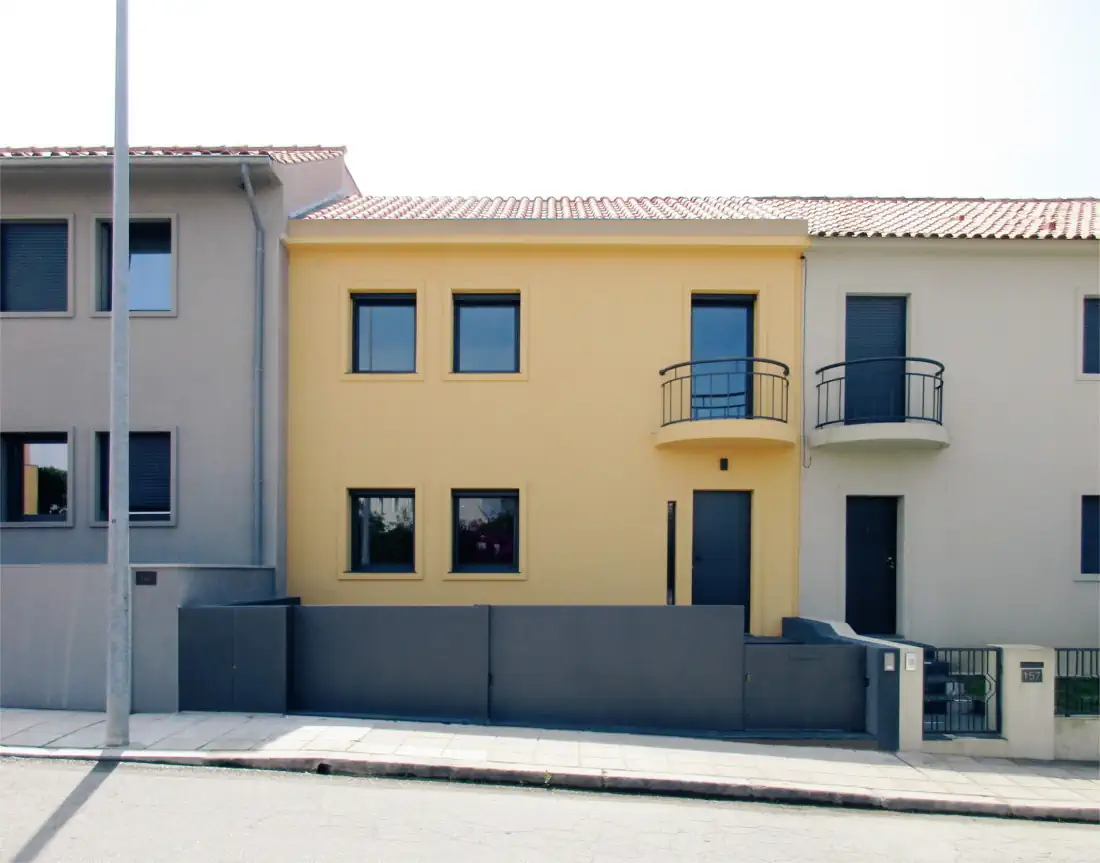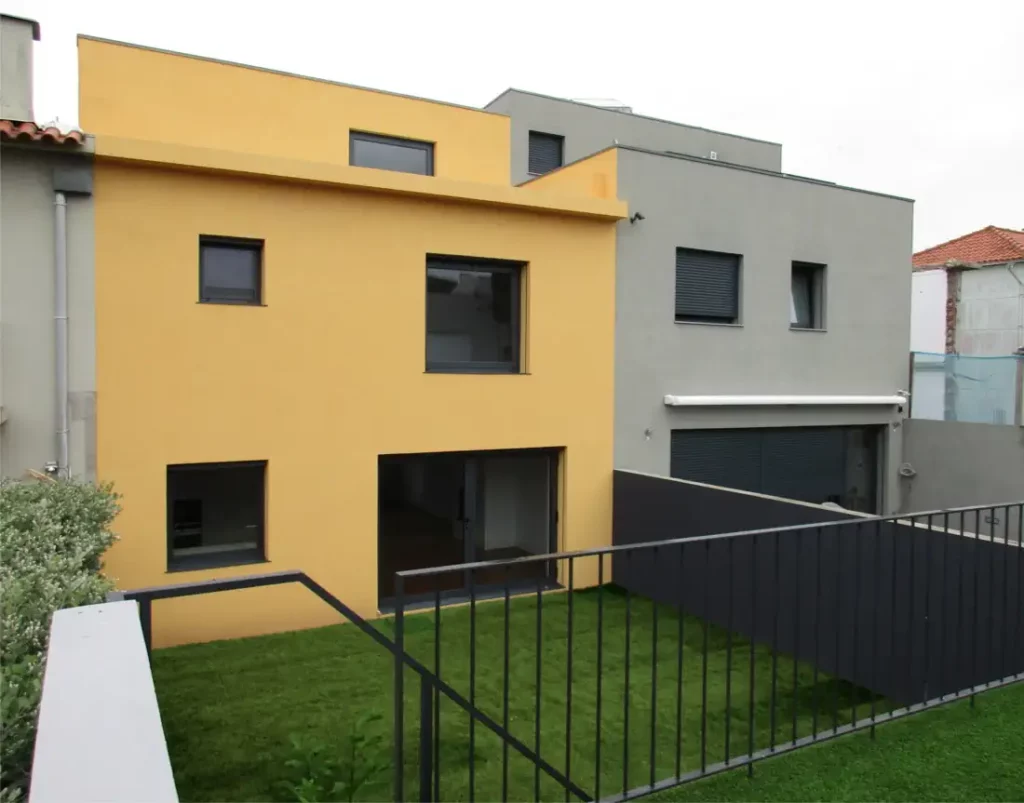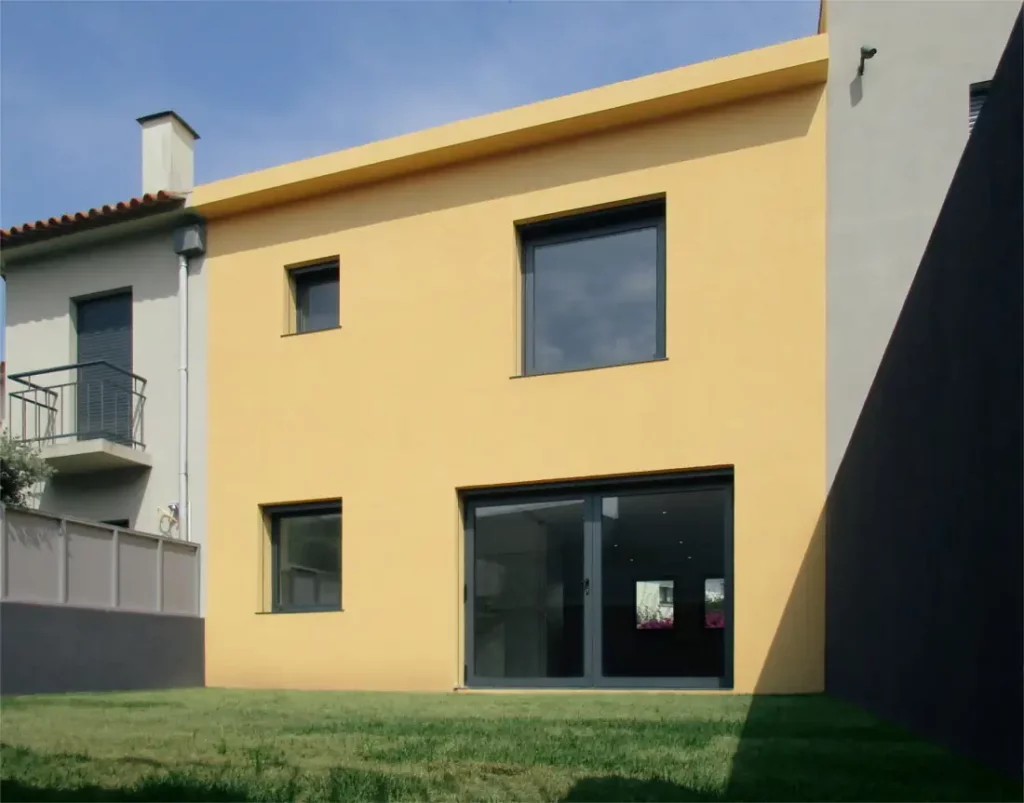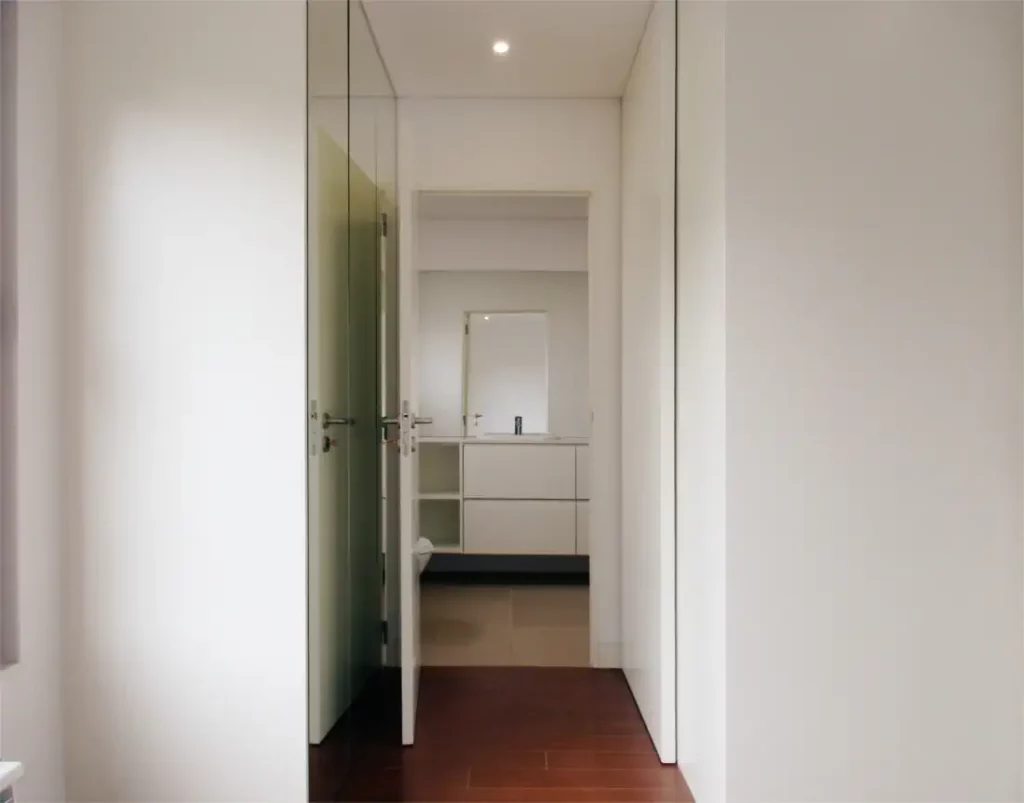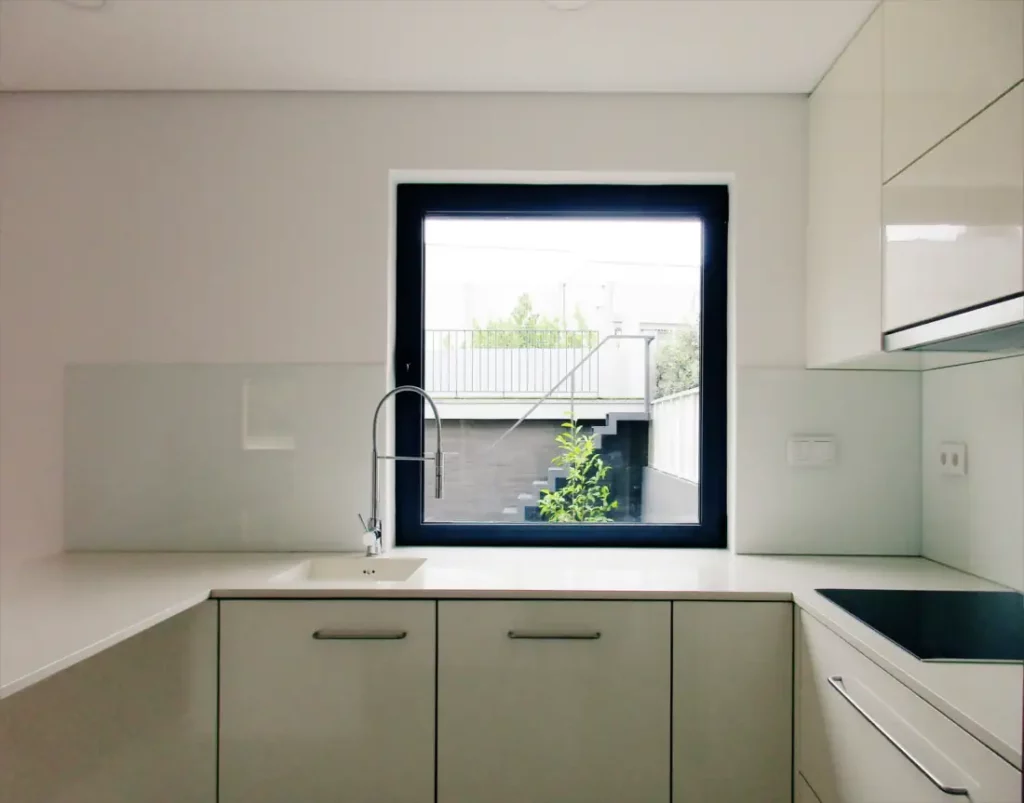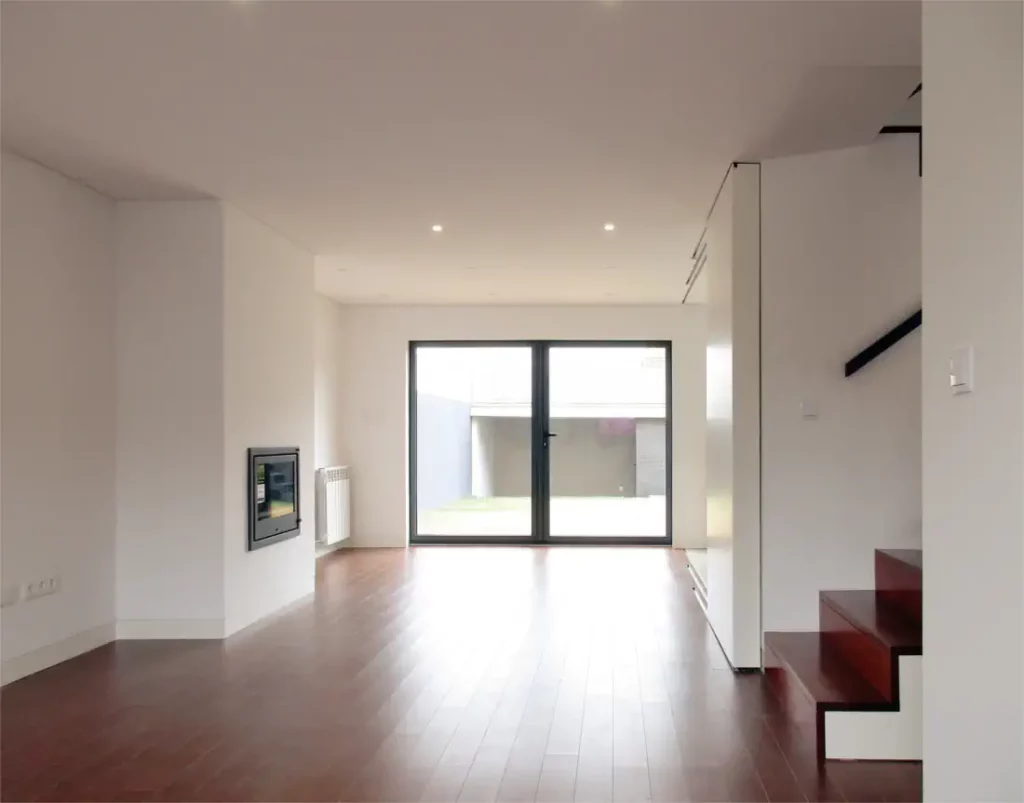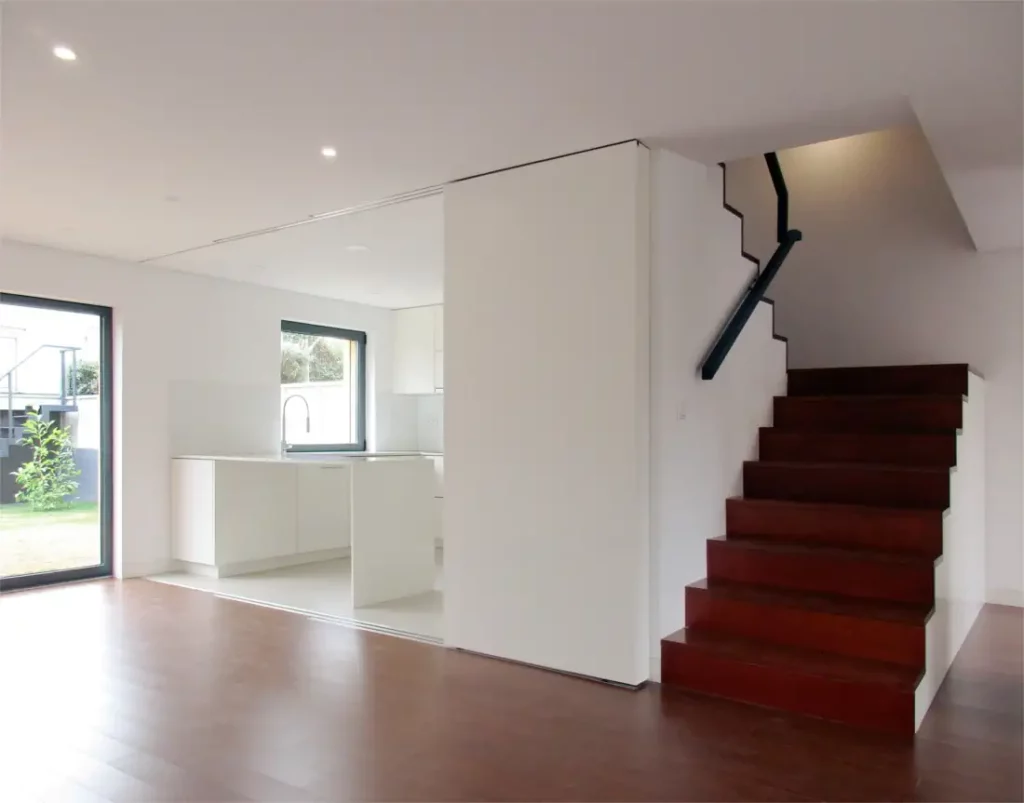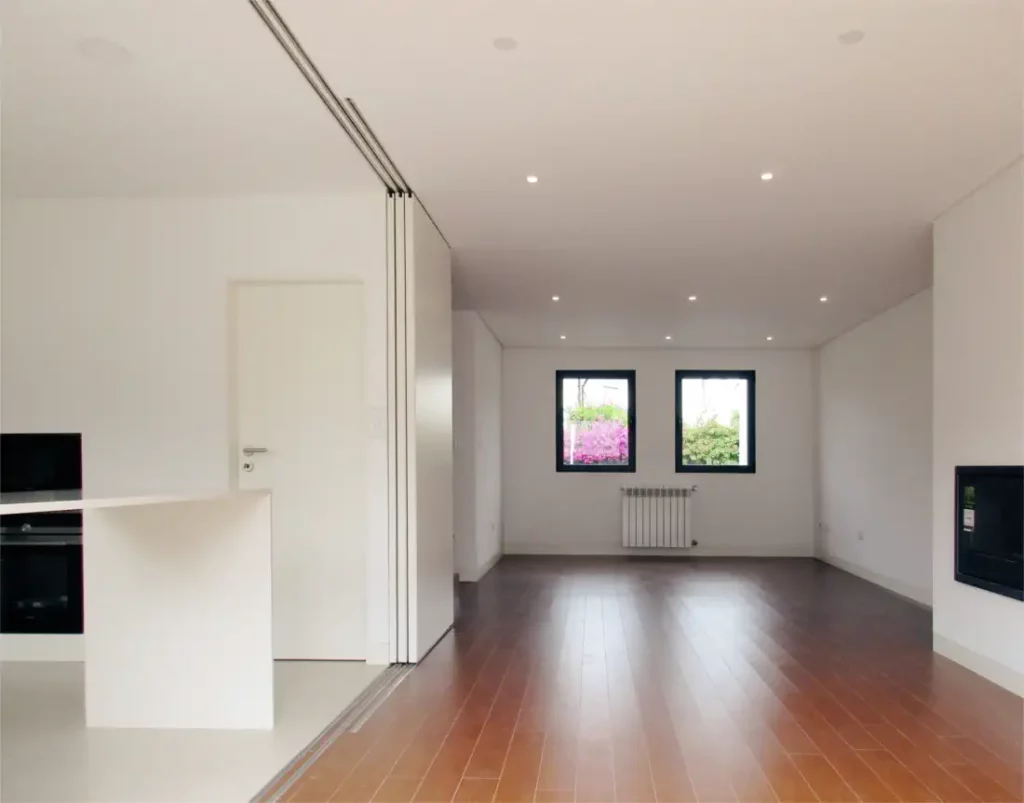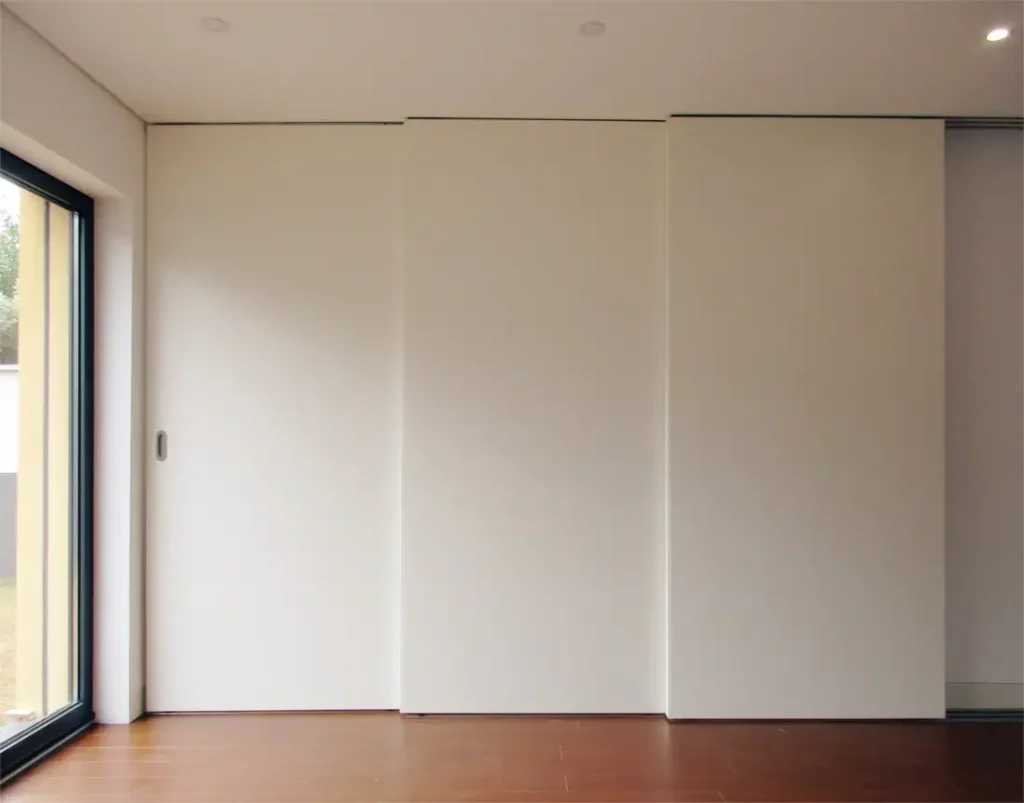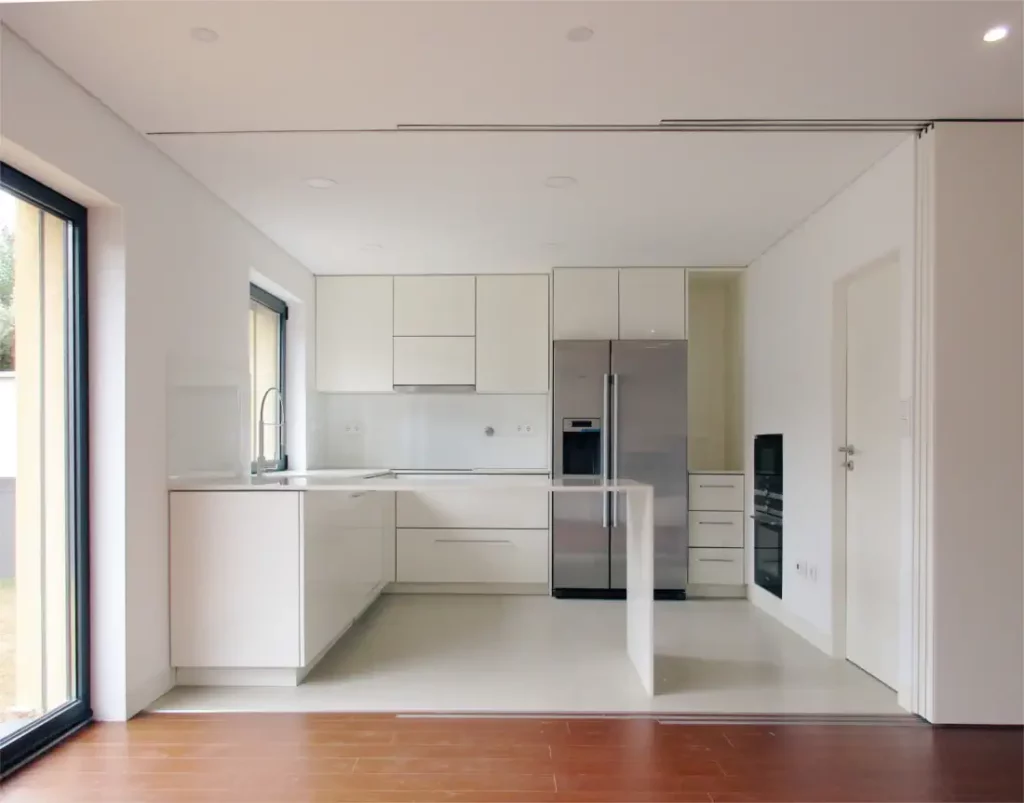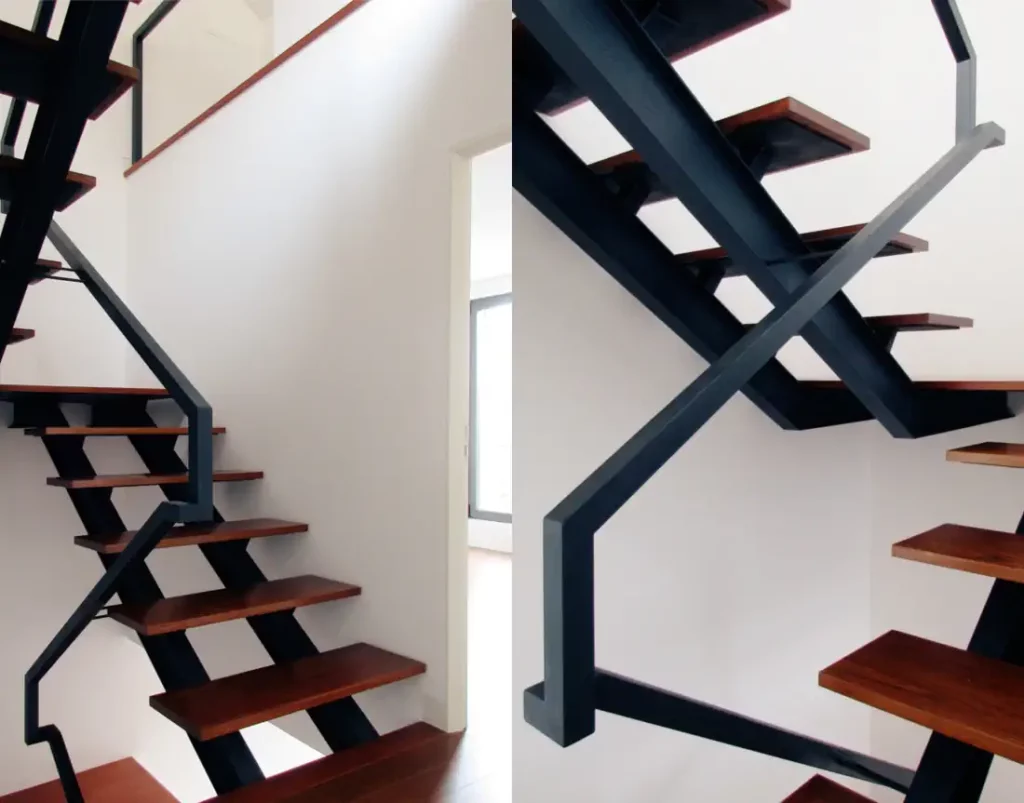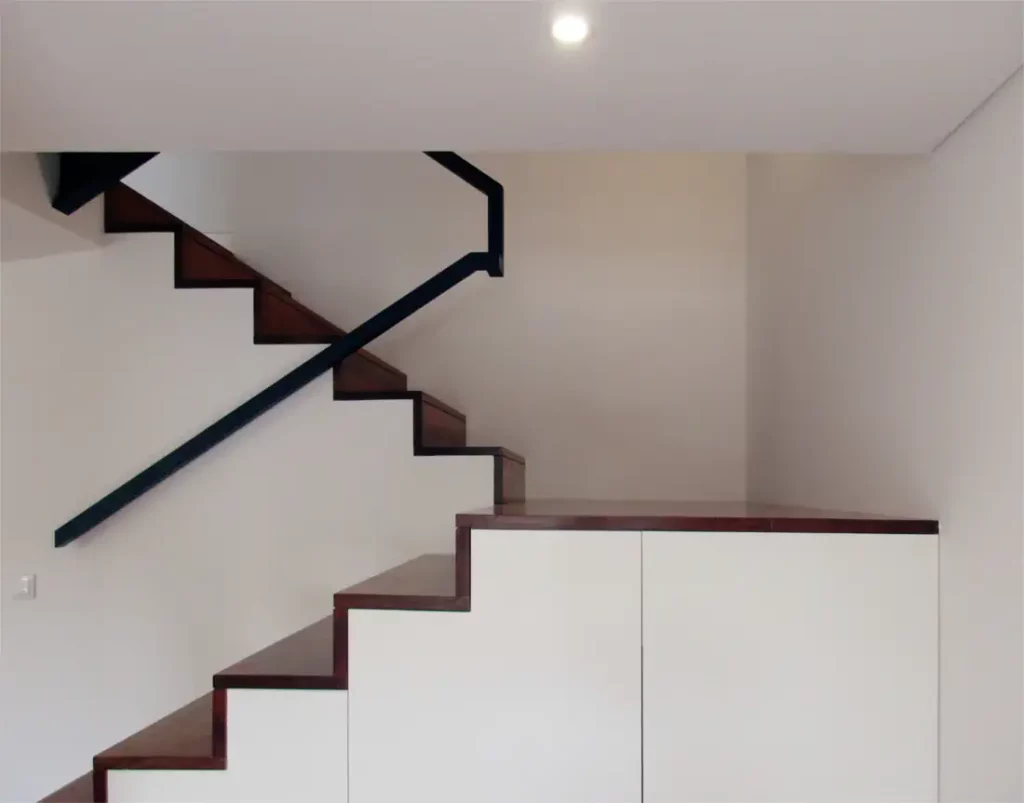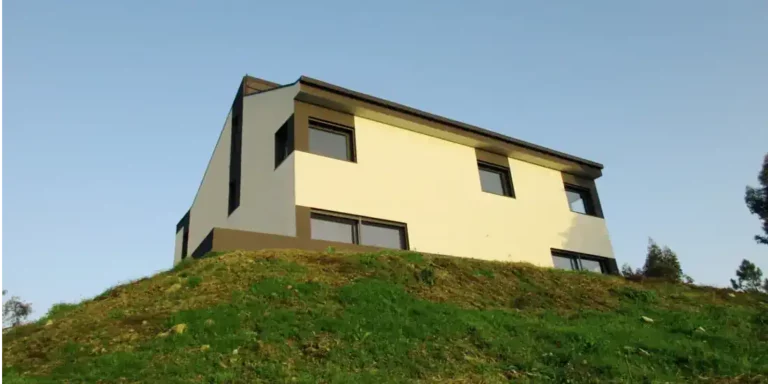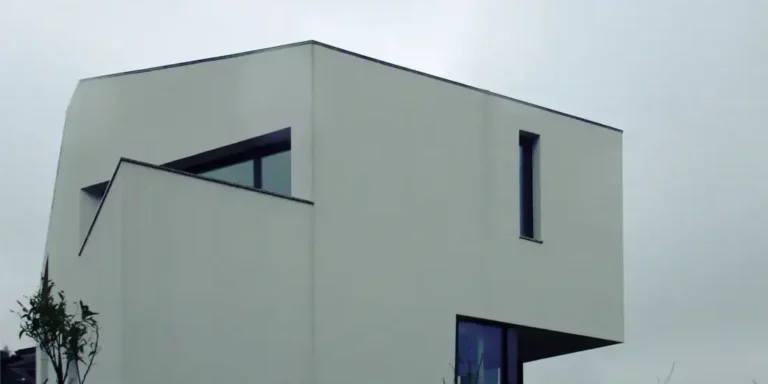Our architects were commissioned to carry out the rehabilitation and expansion of a house in the Foz do Douro area, in Porto. The house is small in size, however the project allows each space to be used in the most favorable way. This strategy guarantees a comfortable and sophisticated environment for a modern family.
House Restoration in Porto
Images
The rehabilitation
It was necessary to completely rebuild the house in order to provide it with maximum thermal comfort and transform what was a modest house into a new building where the charm and elegance of minimalism allow an efficient response to the program to be installed.
The architecture project
The project of this house in Foz is based on the profitability of all spaces in order to overcome the small dimensions. The staircase takes on a preponderant role, allowing light to flood all circulation spaces. We organize social spaces in a fluid way. However, we always allow for their separation through removable panels that sometimes unite, sometimes separate the living room, kitchen and office.
On the ground floor there is the living room, kitchen, office and guest bathroom. Going up to the top floor, we find the master bedroom with bathroom and the two bedrooms with a shared bathroom.
On the second floor, the sauna and terrace complete the program. We created a project that takes advantage of all the available volume. In the background, the stairwell is a pantry, the roof attic is a sauna, and a niche houses a bicycle locker. Outside, we designed a garden with laid-out grass that allows you to park an electric vehicle. In short, as architects we use all the technical resources that multiply the uses of spaces.
A classic house with modern simplicity
The strategy of efficiency in spatial distribution also goes hand in hand with a desire to maintain the charm of traditional architecture. However, we made a point of giving it both contemporary and elegant modernity. Light is therefore the most useful instrument to do this. In this sense, all spaces have natural lighting and thus expand our perception of the space. At the same time, promoting the relationship between the interior and the green exterior and landscaped patio is a priority.
In denser urban areas, it is always a challenge for the architect to install extensive programs within a rehabilitation project. Precisely because of the need to comply with urban planning frameworks, it is increasingly difficult to preserve the authenticity of neighborhoods. However, we prepare the spaces with technical solutions that reuse all areas. At the same time, we were careful in the relationship between modernity and tradition. Basically, this is how the objective is achieved: quality architecture in a qualified urban context.
